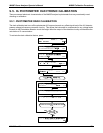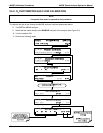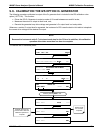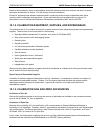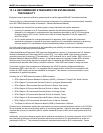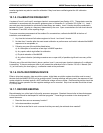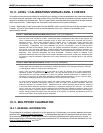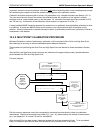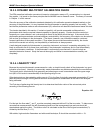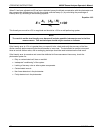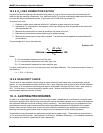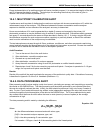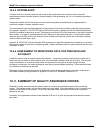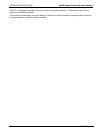
M400E Ozone Analyzer Operator’s Manual 346BEPA Protocol Calibration
10.2. LEVEL 1 CALIBRATIONS VERSUS LEVEL 2 CHECKS
All monitoring instruments are subject to some drift and variation in internal parameters and cannot be expected
to maintain accurate calibration over long periods of time the EPA requires a schedule of periodic checks of the
analyzer’s calibration be implemented. Zero and span checks must be used to document that the data remains
within required limits. These checks are also used in data reduction and system validation.
A Level 1 Span check is used to document that the M400E is within control limits and must be conducted every
2 weeks. A Level 2 Span Check is to be conducted between the Level 1 Checks on a schedule to be
determined by the user.
LEVEL 1 ZERO AND SPAN CALIBRATION (Section 12 of Q.A. Handbook)
11
A Level 1 zero and span calibration is a simplified, two-point analyzer calibration used when analyzer linearity
does not need to be checked or verified. (Sometimes when no adjustments are made to the analyzer, the
Level 1 calibration may be called a zero/span check, in which case it must not be confused with a Level 2
zero/span check.) Since most analyzers have a reliably linear or near-linear output response with
concentration, they can be adequately calibrated with only two concentration standards (two-point
concentration). Furthermore, one of the standards may be zero concentration, which is relatively easily
obtained and need not be certified. Hence, only one certified concentration standard is needed for the two-
point (Level 1) zero and span calibration. Although lacking the advantages of the multipoint calibration, the
two-point zero and span calibration--because of its simplicity--can be (and should be) carried out much more
frequently. Also, two-point calibrations are easily automated. Frequency checks or updating of the
calibration relationship with a two-point zero and span calibration improves the quality of the monitoring data
by helping to keep the calibration relationship more closely matched to any changes (drifts) in the analyzer
response.
LEVEL 2 ZERO AND SPAN CHECK (Section 12 of Q.A. Handbook)
11
A Level 2 zero and span check is an "unofficial" check of an analyzer's response. It may include dynamic
checks made with uncertified test concentrations, artificial stimulation of the analyzer's detector, electronic
or other types of checks of a portion of the analyzer, etc.
Level 2 zero and span checks are not
to be used as a basis for analyzer zero or span adjustments,
calibration updates, or adjustment of ambient data. They are intended as quick, convenient checks to be
used between zero and span calibrations to check for possible analyzer malfunction or calibration drift.
Whenever a Level 2 zero or span check indicates a possible calibration problem, a Level 1 zero and span
(or multipoint) calibration should be carried out before any corrective action is taken.
If a Level 2 zero and span check is to be used in the quality control program, a "reference response" for the
check should be obtained immediately following a zero and span (or multipoint) calibration while the
analyzer's calibration is accurately known. Subsequent Level 2 check responses should then be compared
to the most recent reference response to determine if a change in response has occurred. For automatic
Level 2 zero and span checks, the first scheduled check following the calibration should be used for the
reference response. It should be kept in mind that any Level 2 check that involves only part of the analyzer's
system cannot provide information about the portions of the system not checked and therefore cannot be
used as a verification of the overall analyzer calibration.
10.3. MULTIPOINT CALIBRATION
10.3.1. GENERAL INFORMATION
The procedures for multipoint calibration of an O
3
analyzer by UV photometry or a transfer standard have been
specified in the Code of Federal Regulations
1
. To facilitate these procedures, operational and calculation data
forms have been developed. These forms will aid in conducting calibrations and quality assurance checks. A
detailed description of the calibration theory and procedures for UV photometry and transfer standards is in the
Code of Federal Regulations
1
and TAD.
2, 3
04315 Rev. C1 175



